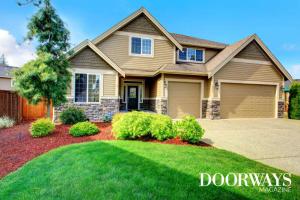Step-by-Step Guide to Designing and Building Your Own Dream Home

-
Quick Links:
- 1. Introduction
- 2. Planning Your Build
- 3. Designing Your Home
- 4. Budgeting and Financing
- 5. Permits and Regulations
- 6. The Construction Process
- 7. Sustainable Building Practices
- 8. Finishing Touches
- 9. Case Studies
- 10. Expert Insights
- 11. FAQs
1. Introduction
Designing and building your own house is an exciting venture. It allows you the freedom to create a space that reflects your personal style while ensuring it meets your functional needs. This comprehensive guide will walk you through the entire process, from the initial planning stage to the final touches that make a house a home.
2. Planning Your Build
Before you start your journey, careful planning is essential. Here are key steps to consider:
- Define Your Goals: What are your must-haves and nice-to-haves?
- Choose a Location: Consider accessibility, community, and future growth.
- Set a Timeline: Establish realistic deadlines for each phase.
- Research: Look into local building codes and regulations.
Choosing the Right Location
When selecting a site for your home, factors to consider include:
- Proximity to work and amenities
- School districts and community services
- Environmental factors like flooding and terrain
3. Designing Your Home
Your home’s design reflects your lifestyle and preferences. Here are crucial components of home design:
- Layout: Think about the flow of space and room placement.
- Style: Decide on architectural styles (modern, traditional, etc.).
- Functionality: Ensure spaces serve their intended purpose efficiently.
Using Design Software
Consider using home design software to visualize your ideas. Some popular options include:
- SketchUp
- AutoCAD
- Sweet Home 3D
4. Budgeting and Financing
Creating a realistic budget is critical for your project’s success. Here’s how to approach budgeting:
- Estimate Costs: Include materials, labor, permits, and unexpected expenses.
- Explore Financing Options: Consider loans, grants, and personal savings.
- Track Expenses: Keep meticulous records of all costs incurred.
5. Permits and Regulations
Before construction begins, it’s important to secure the necessary permits. This usually involves:
- Researching local building codes
- Submitting plans for approval
- Paying applicable fees
6. The Construction Process
Once your plans are approved, construction can begin. Key phases include:
- Site Preparation: Clearing and leveling the land.
- Foundation: Laying a solid base for your home.
- Framing: Building the skeleton of your house.
- Installation: Adding plumbing, electrical, and HVAC systems.
- Finishing: Interior and exterior finishes.
7. Sustainable Building Practices
Incorporating eco-friendly practices can enhance your home’s efficiency. Consider these strategies:
- Energy-Efficient Appliances: Invest in appliances that save energy.
- Solar Panels: Harness renewable energy sources.
- Insulation: Use high-quality insulation to reduce energy loss.
8. Finishing Touches
The final stages of construction are crucial for turning your house into a home. Important aspects include:
- Interior Design: Choose colors, furnishings, and decor that reflect your style.
- Landscaping: Create outdoor spaces for relaxation and entertainment.
- Final Inspections: Ensure everything is up to code before moving in.
9. Case Studies
Let’s explore a few case studies of successful DIY home builds:
Case Study 1: The Eco-Friendly Bungalow
In 2021, a couple in California designed their own eco-friendly bungalow using sustainable materials and solar power. Their focus on energy efficiency resulted in a 40% reduction in energy costs.
Case Study 2: The Modern Family Home
A family in Texas built a modern home that emphasizes open spaces and natural light. By utilizing a local architect, they created a custom design that perfectly met their needs.
10. Expert Insights
To gain further insights, we consulted with experts in home design and construction:
Jane Doe, Architect: "Understanding your needs and the space you have is crucial for a successful build."
John Smith, Builder: "Always have a contingency fund. Unexpected costs will arise."
11. FAQs
1. How long does it take to build a house?
On average, it takes 6 to 12 months to build a house, depending on complexity and weather conditions.
2. Can I build my house without hiring a contractor?
Yes, but it requires significant knowledge of construction practices and regulations.
3. What should I include in my house design?
Consider layout, style, functionality, and your lifestyle needs.
4. How can I save money while building my house?
Consider doing some of the work yourself, sourcing materials directly, and comparing contractor bids.
5. What permits do I need to build a house?
Permits vary by location, but common ones include building, electrical, plumbing, and zoning permits.
6. Is it better to buy or build a home?
It depends on personal circumstances. Building allows for customization, while buying may be quicker.
7. What are the benefits of sustainable building?
Sustainable building practices can lower utility costs and reduce environmental impact.
8. How do I choose a builder?
Research local builders, check reviews, and ask for references to find a trustworthy contractor.
9. What is the average cost of building a house?
The cost can vary significantly but typically ranges from $100 to $200 per square foot.
10. How do I handle unexpected issues during construction?
Maintain open communication with your contractor and adapt your budget as needed for unforeseen expenses.